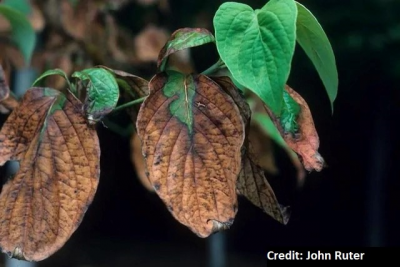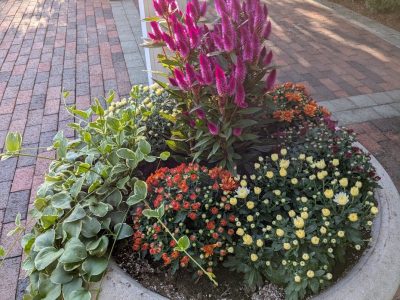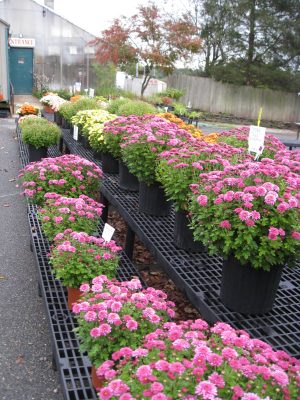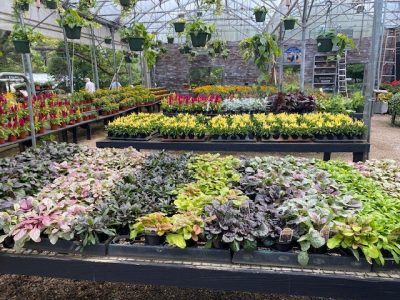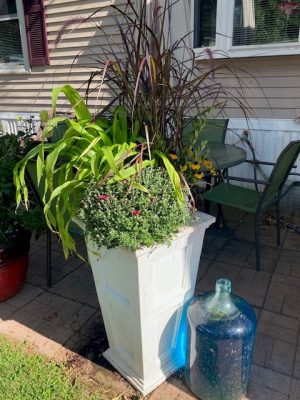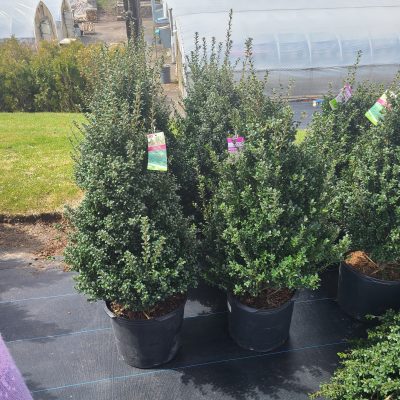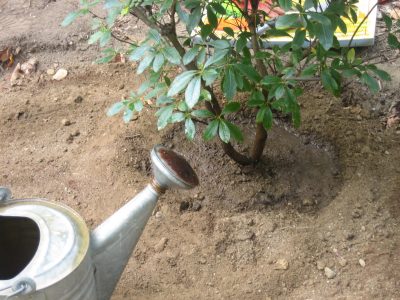By Heather Zidack, UConn Home & Garden Education Center
Garlic belongs to the allium family, which includes onions, shallots, chives, and even some ornamental plants. People have strong feelings about garlic; they either love it or hate it. Whether you add it to your pantry of seasonings or not, there are tons of fantastic reasons to plant it in your garden.
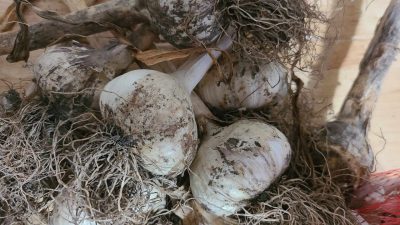
Garlic is great for gardeners on the go. One of my favorite things about these plants is the window in which they grow. You plant cloves in October and harvest the bulbs in July. Planting garlic cloves is one of the last things I do in my garden before hanging up my gloves for the season. This means I have an entire bed already working for me when the spring starts. In early summer, you can harvest the young flower spikes, known as scapes, and use them in recipes for a mild garlic flavor. They blend beautifully with early season cole crops to make some fantastic spring dishes!
From a practical standpoint, the time saved in planting an entire bed before the season has even started is invaluable. Their presence helps to retain garden soil and prevent loss through erosion over the dormant season. Their care is minimal, only needing a side-dress of fertilizer in the spring and supplemental water when active growing starts. On top of all of that, they package themselves perfectly for storage, when cured and stored properly.

Another fantastic benefit to having garlic in your garden beds is that it is well equipped to fend off many vertebrate and invertebrate types of pests. From personal experience, my garlic beds have not needed a fenced in area like my other vegetables and have been relatively undisturbed by local wildlife. While there are claims out there regarding companion planting, I only can confirm for certain that the properties of garlic keep animals away from garlic plants. Scientists are also studying the benefits of garlic for the microbial environment in the soil, to see what other impacts they may have.
As large bulbs develop, they help to break up the soil in the bed for whatever is next to come in the rotation. Once garlic bulbs are harvested, we usually have anywhere between 90 and 100 days left of the growing season. This is plenty of time to rotate in a fast-growing crop like leafy greens, summer squash, carrots, radish, or even some kinds of brassicas.
If you do decide to give garlic a try this year, make sure you pick up clean seed garlic from a trusted source. As with any other plant, healthy starting material will help in yielding healthy plants. Hardneck varieties tend to grow best in our climate. They have a firm stem that starts at the base of the bulb and grows through the plant, giving it a strong single stalk during the growing season (this is where the scapes come from). They need a vernalization (cold) period, which is why it is best to plant them before the ground freezes. There are many varieties of hardneck garlic with a wide range of flavors.
Do not use garlic cloves from the grocery store. Grocery stores typically carry softneck garlic, which has no central stem and may have more cloves inside. A lot of our commercial garlic is grown in California. Softneck garlic may not grow as well in our climate. In addition, commercial agricultural produce can sometimes be treated with growth inhibitors or inadvertently carry pests or pathogens that would not serve your garden well. Local farms, farmers markets, and harvest festivals are great resources to find quality planting garlic. There are also reputable catalog companies out there, but you better get to ordering as time is short!
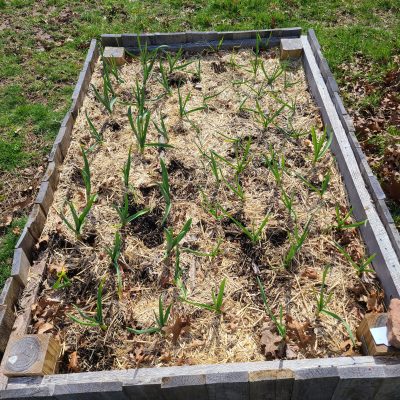
Before planting, break the garlic bulb into its numerous cloves. Don’t be too concerned if some skin flakes off of the outermost layer, but do not peel the garlic before planting it. The intact skin acts as a protective barrier to keep them from rotting in the soil. Place cloves pointy end up in the soil at a depth of 1-2 inches, depending on the size of the clove. Water in and cover with a straw or leaf mulch, and it’s done! Don’t be too shocked if you see them start to emerge from the soil before the snow. Leave them be and assess in the spring, sometimes you don’t even have to cut those leaves back!
Whether you’re a seasoned gardener or just starting out, garlic offers something for everyone. Its numerous benefits in the garden, plus its versatility in the kitchen provide a great starting point for those who want to have their own garden-to-table experience. You’ll be a pro in no time!
The UConn Home & Garden Education Center supports UConn Extension’s mission by providing answers you can trust with research-based information and resources. For gardening questions, contact us toll-free at (877) 486-6271, visit our website at homegarden.cahnr.uconn.edu, or reach out to your local UConn Extension center at cahnr.uconn.edu/extension/locations.
This article was published in the Hartford Courant October 4, 2025


